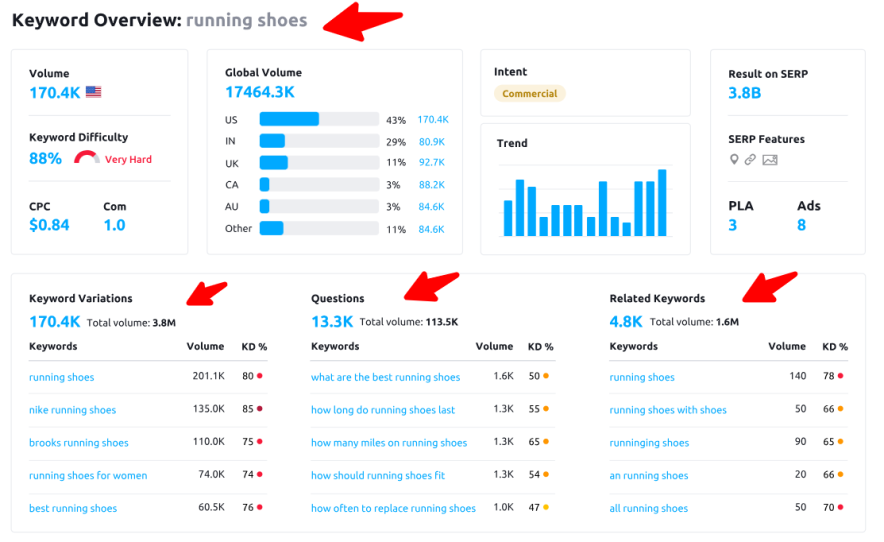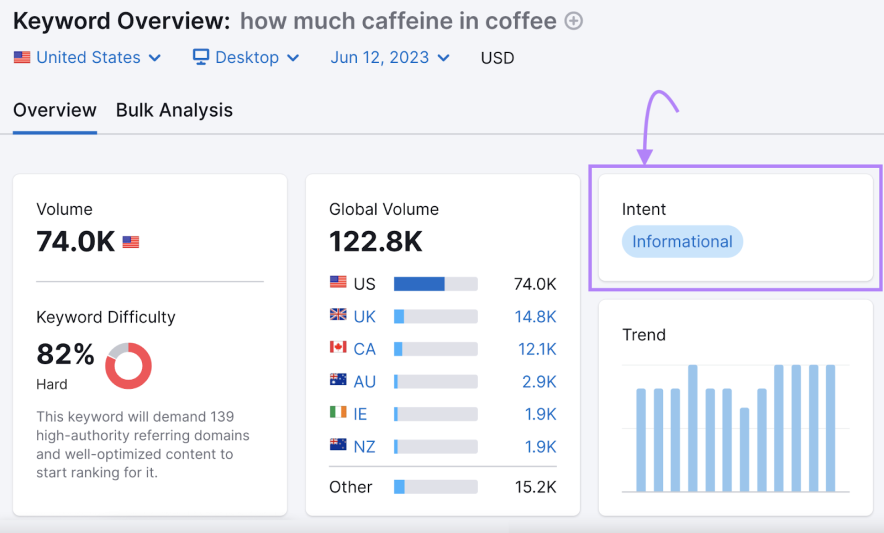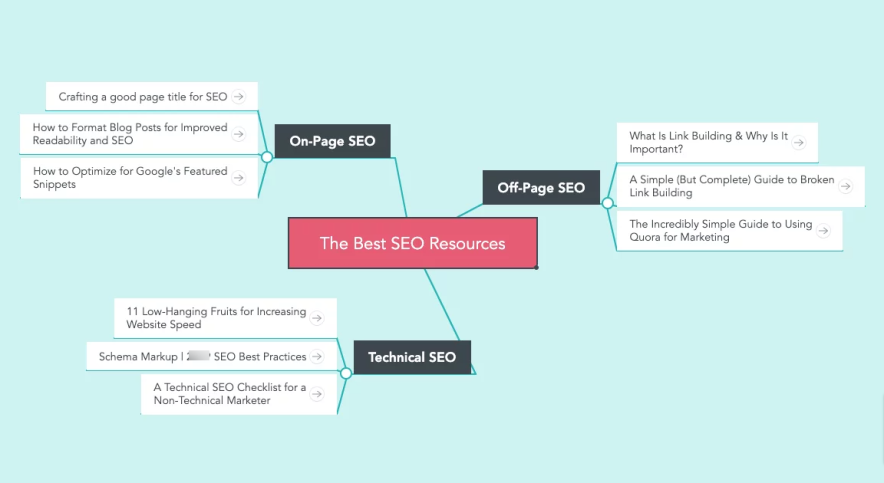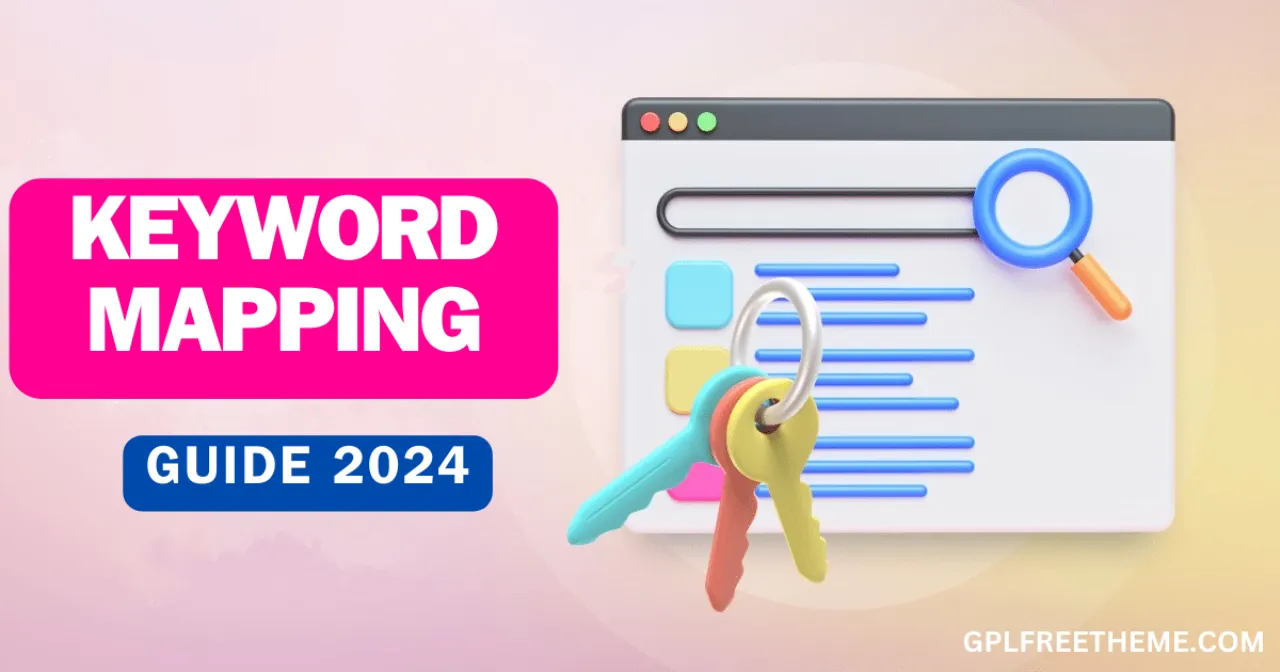93% of online experiences begin with a search engine like Google.
If you want to rank higher in Google and get more search traffic to your website, you need to do keyword mapping. It is the process of assigning relevant keywords to each page on your website.
The biggest benefit of keyword mapping is that it helps search engines understand what your website is all about and which pages are relevant to specific search queries.
If you’re just getting started with keyword mapping, this free guide is just for you. In this guide, you’ll find:
- What keyword mapping is
- How to do it properly
- Real-life examples, tips, and more
Are you ready? Let’s get started.
What is keyword mapping?
Keyword mapping is the process of strategically assigning relevant keywords to each web page on your website. This ensures that each page is optimized for a specific set of keywords, also known as search intent.
By implementing a solid keyword mapping strategy, you can effectively optimize your website content, titles, meta descriptions, product pages, and other elements to improve your search engine rankings (SERPs) for your target keywords.
Let’s consider a real-world example using Semrush.
Semrush is a SaaS company that provides SEO software solutions. Therefore, it often aims to rank for keywords related to SEO software across its various product pages.
For instance, on the product page for its keyword research tool, Semrush might target keywords such as “keyword research tool,” “best keyword tool,” and “how to do keyword research.”
This approach effectively maps relevant keywords to each web page on its website.
The benefits of keyword mapping include:
- Ensuring a well-organized website for keyword targeting: Keyword mapping helps you structure your website effectively to target specific keywords.
- Preventing keyword cannibalization: Keyword cannibalization occurs when two or more pages on your website compete for the same keywords. Keyword mapping helps you avoid this issue by assigning distinct keywords to each page.
- Enhancing user and search engine navigation: Keyword mapping makes it easier for both users and search engines to navigate your web pages.
- Improving internal linking structure: Keyword mapping contributes to a better internal linking structure, which enhances crawling and link equity distribution to relevant pages.
- Keyword categorization: Keyword mapping allows you to group keywords into related categories for more effective management.
Let’s now explore how to conduct keyword mapping in 2024 for a more optimized keyword strategy.
Step 1: Utilize a Keyword Mapping Template
To effectively organize all your keyword ideas, you’ll need a structured keyword mapping template. We recommend using Google Spreadsheets to store your website keywords (we do so ourselves).
Take advantage of our FREE keyword mapping template available in Google Spreadsheets.
Note: This template resembles the keyword template we employ at BloggersPassion for organizing each and every post.
You can create a copy of the template and rename it as per your preference.
Here’s a glimpse of the template:

As you can observe, we have incorporated crucial keyword metrics, including:
- Primary Keyword: The primary keyword is the main keyword you want to rank for on a specific page.
- Secondary Keywords: Secondary keywords are related keywords that can help you attract more traffic to your page.
- Search Volume of Each Keyword: Search volume indicates the average number of times a keyword is searched for each month.
- Keyword Difficulty%: Keyword difficulty represents the level of competition for a particular keyword.
- Target URL: The target URL is the web page you want to optimize for the chosen keyword.
Feel free to add additional columns based on your requirements, such as domain authority, anchor text, and so on.
Once you’ve familiarized yourself with the template, you’re ready to start populating it with a fresh set of keywords relevant to your website.
Benefits of Using a Keyword Mapping Template:
- Comprehensive Keyword Organization: Effectively organize all the keywords you want to rank for.
- Structured Keyword Categorization: Group keywords into categories to facilitate targeted content creation.
- Keyword Ranking Progress Tracking: Monitor your keyword ranking progress and assess the long-term effectiveness of your keyword map.
- Effortless Collaboration: Easily share your keyword map with team members or clients for seamless collaboration.
Step 2: Conduct Keyword Research
Keyword research is a cornerstone of SEO keyword mapping. It involves identifying relevant keywords for your products, services, or website.
For comprehensive keyword research, we rely on the Semrush Keyword Magic Tool, boasting an extensive keyword database of over 25 billion keywords.
If you’re just starting, you can explore free keyword tools like:
- Ubersuggest
- KeywordTool.io
- Answer The Public
Example of Keyword Research with Semrush:

As you can observe above, Semrush provides access to a comprehensive array of keyword metrics, including:
- Related Keywords: Discover related keywords that broaden your keyword reach.
- Question Keywords: Uncover question-based keywords that align with user intent.
- CPC: Identify the cost-per-click (CPC) for each keyword to gauge paid advertising potential.
- Keyword Difficulty: Assess the competition level for each keyword to estimate ranking difficulty.
- Global Search Volume: Gain insights into the global search volume for each keyword to understand its popularity.
The key here is to identify at least one primary keyword and several secondary keywords for effective keyword mapping.
If you’re new to keyword research, we recommend checking out our free guide, “How to Do Keyword Research Like a Pro,” to learn how to find high-quality keywords.
Step 3: Keyword Clustering
Once you’ve compiled your list of primary and secondary keywords, it’s time to group them into clusters based on search intent. Keyword clustering involves organizing similar keywords together based on the underlying intent of users’ search queries.
When performing keyword clustering, it’s crucial to consider the following factors:
- Search Intent: Understanding the intent behind each keyword is vital to determine what users are seeking when they make a particular search.
- Keyword Relevance: Assessing the relevance of each keyword to the content on the corresponding page ensures that the keywords align with the page’s subject matter.
- Keyword Competition: Evaluating the competition level for each keyword helps determine the difficulty of ranking for those keywords.
These three keyword metrics play a pivotal role in identifying the most suitable keywords for keyword clustering. Among these factors, search intent holds paramount importance in grouping similar keywords together.
Various tools can assist in determining the intent of your primary and secondary keywords. One effective approach is to utilize Semrush, as it displays the search intent alongside each keyword.
Here’s a step-by-step guide on how to cluster keywords using Semrush:
- Access the Semrush Keyword Magic Tool.
- Enter your target keyword in the search bar.
- Click on the “Keyword Difficulty” tab to view the search intent distribution for the keyword.
- Identify keywords that share similar search intents and group them together.
By following these steps, you can effectively cluster your keywords based on search intent, ensuring that your content aligns with user expectations.

When clustering keywords, it’s essential to group together keywords that share a common theme and exhibit the same search intent. This ensures that your content aligns with user expectations and effectively addresses their search queries.
Here’s an example of a real-world keyword cluster:
Topic: How to Start a Blog
Keywords:
- how to start a blog for free
- how to create a blog in 2024
- how to build a blog and make money
As you can see, the keywords within the “How to Start a Blog” cluster are all relevant to finding information on establishing a blog.
To delve deeper into keyword clustering, refer to our free guide on “How to Do Keyword Clustering in 2024.”
Step 4: Identify Missing Keywords
Elevate your keyword mapping strategy by uncovering missing keywords. Missing keywords represent keywords for which your competitors rank in the top 10 search results, while your website does not. These keywords present valuable opportunities to enhance your website’s SEO and visibility in Google search.
Leverage an SEO tool like Semrush to explore the keyword gap between your website and your competitors’ websites.
Quick Tutorial: Uncovering New Ideas from Competitor Keywords
- Access the Keyword Gap tool from Semrush.
- Enter your website URL and the URLs of your competitors’ websites.
- Click on the “Compare” button.
Semrush will analyze the keyword ranking landscape and provide you with a list of missing keywords that you can target to improve your website’s search performance.

Once you hit the “Compare” button, you get a pie diagram showing the keyword overlap you both have in common.
Have a look;

As you can see, you’ll see the top keyword opportunities in the “Missing” section to find out the keywords our competitor site ranks for, and we don’t.
Step 5: Create a keyword map
Once you’re done with all the five steps, it’s time for you to create a keyword map for your website.
A keyword map can be used as a blueprint for how you will optimize your website for each topic cluster.
Remember, your keyword map should include the primary keyword for each cluster, as well as the related keywords that you will target on each subtopic page.
Here is an example of a keyword map for the topic cluster “best SEO resources”; (image source: MeisterLabs.com)
Here’s the explanation for the above keyword map;

Pillar page: Best SEO resources
Subtopic pages:
- On-page SEO resources
- Off-page SEO resources
- Technical SEO resources
Primary keyword: best SEO resources
Secondary keywords:
- Crafting great titles for SEO
- Schema markup best practices
- A simple guide to link building
- And the list goes on
This keyword map can be used to create targeted content for each subtopic page.
For example, the “On-page SEO resources” page could include a list of the best on-page SEO tools, tips, and strategies.
Similarly, the “Technical SEO resources” page could include information on the different technical SEO factors that you need to consider to improve your search rankings.
Here are some tips for using a keyword map;
- Make sure that your keyword map contains a comprehensive list of keywords and includes all of the relevant primary and secondary keywords for your topic cluster.
- Make sure that your content is relevant to the keywords that you are targeting.
- Optimize your existing content for the keywords that you are targeting. Use tools like Rank Math or Surfer SEO for optimization.
Best Practices for Keyword Mapping
Here are some of the best practices for keyword mapping.
- Don’t use the same overlapping keywords for more than one page, as it can lead to keyword cannibalization (which can hurt your rankings).
- Start by conducting in-depth keyword research to identify HIGHLY relevant keywords for your website. Use tools like Google Keyword Planner, Semrush, Ubersuggest, etc to find related keyword phrases that are relevant to your target audience.
- No matter what keywords you want to target, consider the intent behind each keyword. Are users looking for information, trying to make a purchase, or searching for product deals? You can prioritize the keywords based on informational, navigational, or transactional intent and create relevant pages that match the intent.
- Assign keywords to individual pages based on relevance. Each page should target a primary keyword and related secondary keywords that align with the content.
- Once the mapping is done, make sure to optimize every page on your site properly. Include your target keywords in title tags, meta descriptions, image ALT tags, URLs, etc.
FAQs on SEO keyword mapping
Here are some common questions most people ask about keyword mapping.
Why is keyword mapping important?
The advantages of keyword mapping are it helps you create structured content that helps with better navigation, better user experience, improved rankings, the ability to group similar keywords together, and more.
Is keyword mapping a good SEO practice?
Absolutely yes. Keyword mapping allows you to assign keywords for each web page. The ultimate goal of keyword mapping is to help improve your website’s overall SEO quality and keyword strategy.
How to get started with keyword mapping?
To get started with keyword mapping, you’ll need to:
- Identify your target keywords
- Group your keywords into related clusters
- Assign keywords to pages on your website
- Use a keyword map template
What are some common mistakes to avoid when keyword mapping?
Here are some common mistakes to avoid when keyword mapping:
- Avoid keyword cannibalization (don’t create more than 1 page or article that has the same keyword intent)
- Stop targeting irrelevant keywords
- Not grouping your keywords into topics.
What are some tools that I can use for keyword mapping?
Here are some of the best tools that you can use for keyword mapping:
- Semrush
- Ahrefs
- Moz Keyword Explorer
- Ubersuggest
Final Thoughts on Keyword Mapping
Keyword research is an indispensable element of SEO. However, randomly targeting keywords without a strategic approach can prove ineffective. This is where keyword mapping comes into play. Keyword mapping enables you to strategically assign specific keywords to individual pages on your website, providing search engines like Google with a clear understanding of the content and purpose of each page.
Benefits of Keyword Mapping
Keyword mapping offers numerous benefits for your website and SEO strategy:
- Enhanced Search Engine Understanding: By assigning relevant keywords to each page, you provide search engines with a clear roadmap to your website’s content, enabling them to better understand the topics and subtopics you cover.
- Improved Keyword Targeting: Keyword mapping helps you target keywords more effectively, ensuring that your content aligns with user search intent and increases the likelihood of your pages appearing in relevant search results.
- Optimized Content Creation: Keyword mapping guides your content creation process, ensuring that you produce content that is relevant to your target audience and optimized for the keywords you want to rank for.
- Structured Website Organization: Keyword mapping promotes a well-structured website organization, making it easier for users and search engines to navigate your website and find the information they seek.
- Competitive Advantage: By implementing a comprehensive keyword mapping strategy, you gain a competitive edge in the search engine landscape, increasing your chances of attracting more organic traffic and achieving higher search engine rankings.
In conclusion, keyword mapping is an essential tool for optimizing your website for search engines and achieving your SEO goals. By strategically assigning keywords to your website’s pages, you can improve your search engine visibility, attract more relevant traffic, and ultimately enhance your website’s overall performance.
